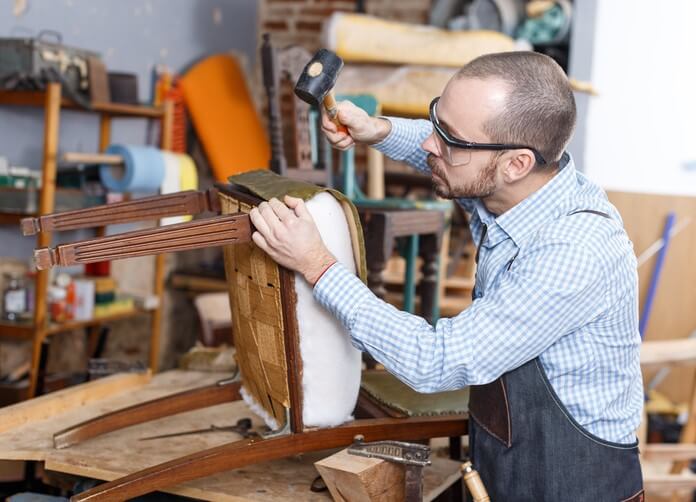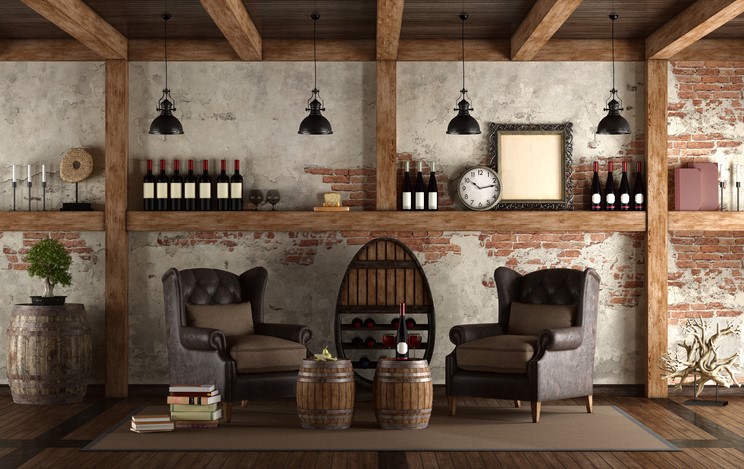Reducing waste during your home renovation can be a tricky endeavor. Construction and home renovations are notorious for the amount of waste they create. Think of how many times you’ve seen hulking construction dumpsters sitting in front of a house, brimming with wood scraps, drywall, old carpet, and all kinds of odds and ends that are almost guaranteed to end up in a landfill. They won’t be sorted or separated for recycling or compost — those dumpsters are nearly always upended in the nearest landfill Construction and demolition area. Not only will this cost you a pretty penny, but that waste will negatively contribute to the ecology around the landfill, too. In this article, we delve into the realm of zero waste home renovations, where sustainability meets creativity.
So, what can you do? Lots! Depending on the type of renovation you’re looking at doing, there are many ways you can save money and be green. If you’re already used to reducing waste and being environmentally conscious, this is another excellent area to put your expertise to good use. If it’s something you want to get in the habit of, this is a great way to learn how to live more green overall.
If you’re planning for a larger renovation, do an online search for eco-renovation companies in your area. This issue is coming to the forefront of homeowners’ minds, and as a result, contracting companies are adapting to their environmentally aware customers. They’ll be able to walk you through how they dispose of different materials from your reno, sustainable source products, or salvage from other job sites.
Achieving a zero waste home renovation
Home renovation projects often bring excitement and a sense of renewal. However, they can also generate a significant amount of waste that contributes to environmental issues. Enter the concept of a “zero waste home renovation,” a sustainable approach that minimizes waste and promotes eco-friendly choices. Embark on a zero waste home renovation journey that aligns with your environmental values.
1. Reimagine materials
One of the core principles of a zero waste home renovation is reimagining materials. Instead of immediately discarding items, consider repurposing or upcycling them. For instance, old wooden pallets can be transformed into chic furniture, and vintage doors can find new life as decorative wall panels. By giving existing materials a second chance, you not only reduce waste but also infuse your space with unique character.
2. Mindful deconstruction
During the demolition phase of a renovation, opt for mindful deconstruction. This involves carefully dismantling structures to salvage usable materials. Salvaged wood, tiles, and fixtures can be incorporated into your new design, reducing the need for new resources. This approach not only lessens the environmental impact but can also save you money in the process.
3. Choose sustainable materials
When new materials are necessary, choose sustainable options. Look for products made from recycled or reclaimed materials. Eco-friendly paints, bamboo flooring, and recycled glass countertops are just a few examples of choices that minimize your carbon footprint. These selections not only enhance the aesthetics of your home but also contribute to a healthier planet.
4. Waste management plan
Craft a waste management plan before starting your renovation. Separate materials that can be recycled from those that need proper disposal. Donate items that are in good condition to local charities or reuse centers. By taking control of waste from the outset, you ensure that valuable resources aren’t needlessly discarded.
5. Energy efficiency upgrades
A zero waste home renovation isn’t just about physical waste—it’s also about minimizing energy consumption. Consider incorporating energy-efficient appliances, LED lighting, and well-insulated windows. These upgrades not only contribute to a more sustainable lifestyle but can also lead to long-term cost savings.
The 3 R’s – Relevant in kindergarten, relevant now
Most of us will remember hearing the phrase, “Reduce, reuse, recycle!” bandied around schools, workplaces, or on TV at some point in our lives. This was always a good practice to follow and still is during your home reno project. Here’s how you can apply that old-school mantra now.
Reduce the amount of waste upfront. It’s staggering when you get an inside look into the amount of waste that many contractors consider to be just the price of doing business.
Why is this? There are a few main reasons. Most contractors learned their trades when construction materials were significantly less expensive than now, and waste from off-cuts and scraps was less of an issue. In addition, the environmental movement has been gaining momentum over the past couple of decades, but it wasn’t always a consideration. Finally, the blunt truth is that it’s just easier for contractors to order more material and not optimize every piece that they’re using. This isn’t to say that they all do this, but it is a common practice, which is why it’s good to interview your contractor before you agree to work with them to get an idea of what their procedures are in this regard.
This requires a bit more time investment on your part, but it will pay off in savings and help you keep needless scraps out of the landfill. Asking questions about how many board feet your builder will need and comparing that to what they’re ordering can be an excellent way to track this. While it’s mostly impossible to make sure that every piece of every board or pipe is used, you’ll be able to monitor if the level of waste is reasonable. For example, if you’re putting in a 10-foot long, non-load bearing interior wall with studs 16 inches apart and a 9-foot ceiling, that’s about 120 total feet of 2×4 that you’ll need. If your builder suggests that they need to order 20 10-foot-long 2x4s, you know that they’re over-ordering and not planning to optimize their use to reduce waste at the site. You can then ask them to do that, to find another area to use that 80 feet of off-cut or order pre-cut material that fits your space and won’t generate any waste. These options will depend on your budget, builder, and your project and space specifics. This simplified example gives you a place to start thinking about questions to ask and how to approach this — we’re not contractors!
Re-use existing materials instead of purchasing brand-new ones. You’d be shocked at how much building material gets ripped out during a renovation just to be heaved into a dumpster and then replaced with the same thing, only new.
For example, if you’re taking walls out, you’ll have 2×4 studs that will likely be somewhere around 8 feet. While you won’t want to reuse these as studs again, they’re perfectly good for use in other areas, like back framing.
Insulation can be reused as well — just know that as it ages, the R-value (the level to which it insulates) will decrease.
Even drywall can be reused if you’re keen enough or are working with a contractor who’s willing to spend some time on it. That goes for most of the ‘Reuse’ category – you have to have that conversation with your builder ahead of time because they won’t all be willing to do this. It takes more time to reuse old material than it does to send it to the dumpster and use neatly stacked, equal-sized 2x4s, and some builders just won’t want to take the extra time, even if you’re willing to pay for it.
Reusing items isn’t just for your building materials, either! Your interior decor can be upcycled or repurposed with a bit of gumption and some online tutorials, and who knows, you might love the DIY life and get into it regularly.
Recycle home renovation scraps instead of sending them to the landfill. This is another area that takes some dedicated time from you or agreement from your builder that they’ll handle this for you.
Recycling needs to be sorted, and this is the area that takes work in renovation projects. If you pull out a wall, for example, you’ll need to be sure to sort metal by separating the nails out of the studs and the electrical boxes and cable before removing paint from the wood and drywall. The same goes for vinyl flooring, old carpet, and anything else that ends up coming out.
Once the sorting part is done, you’ll need to know where to dispose of everything properly. This will vary based on your location and the rules in your area, but you likely won’t have more than two or three stops to make to ensure you’re recycling instead of throwing out your construction waste.
What to keep in mind for yourself or communicate to your builder
Having stated goals is super important in keeping on track. That goes for you and for someone you hire! It also applies to your day-to-day efforts to live greener, not just in your eco-renovation project.
Here’s our list to get you started:
- Minimize the demolition work.
- Use salvaged building materials.
- Plan for deconstruction — meaning you can easily remove building parts during the next renovation.
- Using materials that reduce waste when moving house during installation or use (that minimize packaging, adhesives, finishes, etc.).
- Reduce and recycle waste during construction.
- Use prefabricated components and materials prepared in a factory (such as framing) to reduce off-cut waste on your site.
- Use standardized components that fit the dimensions of your house to reduce off-cut waste on your site.
- Use materials and products that are durable, low maintenance, recyclable or reusable.
Products by room to keep your renovation eco-friendly
If you plan ahead when you’re in the early stages, before you begin your eco-renovation project, you’ll be able to think through what materials are coming out of each room and what you can use to build and redecorate to keep your materials environmentally responsible.
Painting – Choose eco-friendly paints.
Kitchen – Reuse/repurpose kitchen cabinets or reclaimed wood, use tips to save water, and sell old appliances and fixtures.
Bathroom – Pick water-wise fixtures and install energy-efficient equipment with eco-friendly materials.
Living room – Buy recycled furniture, upcycle your current furniture, save window hardware and screens, repurpose carpeting, etc.
Bedroom – Salvage flooring, sell or donate doors.
Remember that as you’re planning what you can do and what you need a contractor to do, there’s also a middle ground: your friendly neighborhood handyman. Calling a handyperson to paint, assemble, or disassemble furniture or help with installations is a great option. These aren’t tasks a builder will do, but you can take some work off your plate using a handyperson!
Navigating zero waste home practices and home insurance: What you need to know
Embracing a zero waste lifestyle is not only environmentally conscious but also impacts various aspects of daily living, including home ownership and maintenance. Let’s explore the intersection of zero waste practices and home insurance, highlighting how eco-friendly choices can influence your coverage and overall risk management strategies.
1. Valuing sustainable upgrades
As homeowners increasingly adopt zero waste practices, they often invest in sustainable home upgrades. From energy-efficient appliances to eco-friendly building materials, these upgrades reduce waste and enhance property value. Communicating these improvements to your insurance provider is essential, as they can impact your home’s replacement value and potential insurance discounts.
2. Insurance coverage considerations
When transitioning to a zero waste home, you may implement changes that require adjustments to your insurance coverage. For instance, if you’re installing renewable energy systems like solar panels or upgrading plumbing to reduce water waste, your policy should reflect these enhancements. Contact your insurance agent to ensure that your coverage aligns with your eco-friendly initiatives.
3. Reusing and repurposing possessions
A zero waste home often involves repurposing or reusing possessions, which can have insurance implications. Valuable antiques, art, or unique repurposed furniture might need additional coverage to account for their true value. Regularly reviewing and updating your home inventory with your insurance provider is crucial to adequately protect these items.
4. Preventing eco-friendly mishaps
While zero waste practices can mitigate various environmental risks, they might introduce new challenges. For instance, DIY composting or rainwater harvesting systems can lead to unintended property damage. Consult your insurance provider to understand if such activities require specific coverage or modifications to your policy.
5. Sustainability and insurance discounts
Many insurance companies reward environmentally conscious homeowners with discounts on their premiums. Implementing energy-efficient systems, installing security features, and utilizing smart home technology can lead to reduced insurance costs. Be sure to inquire about potential discounts that align with your zero waste efforts.
6. Documenting home upgrades
Maintaining a comprehensive record of your home’s sustainable upgrades is essential. Documenting installations, renovations, and improvements helps you track your progress and provides evidence to support potential insurance claims related to eco-friendly features.
Living a zero waste lifestyle goes beyond minimizing waste; it involves holistic changes that resonate throughout your home and lifestyle. As you embark on your zero waste journey, consider how these changes intersect with your home insurance needs. By proactively communicating upgrades, understanding coverage adjustments, and exploring potential discounts, you can create a seamless synergy between your eco-friendly practices and your insurance strategy, resulting in a home that’s not only sustainable but also well-protected.
Embracing a zero-waste lifestyle

This is your chance to make a significant impact on how much waste you produce — don’t let that stop with your eco renovation! Reducing daily waste is something that adds up quickly and makes a more significant impact than you might think, especially when that’s compounded over your lifestyle as a whole.
In fact, a great way to reduce waste is by using building products that are durable and last longer. A new wave of technologically improved building materials is coming to market that do just that. Check out this recent blog from professional contractor Bryan Baeumler, co-host of HGTV’s Renovation Island, who presents his take on what lies ahead for the coming year in home renovation. One of his key takeaways? Durability will be key to going green
A zero waste home renovation isn’t just a trend; it’s a thoughtful way to contribute positively to the environment while creating a beautiful living space. You can embark on a renovation journey that aligns with your values by reimagining materials, making conscious material choices, and prioritizing energy efficiency. Let your home transformation inspire others to embrace sustainability and make a difference, one renovation at a time.
It takes some planning and coordination, but with a bit of extra thought and effort, your home renovation can be a great refresh for your life without having harmful impacts on the environment. You don’t have to be a DIY master to reduce, reuse, and recycle!




